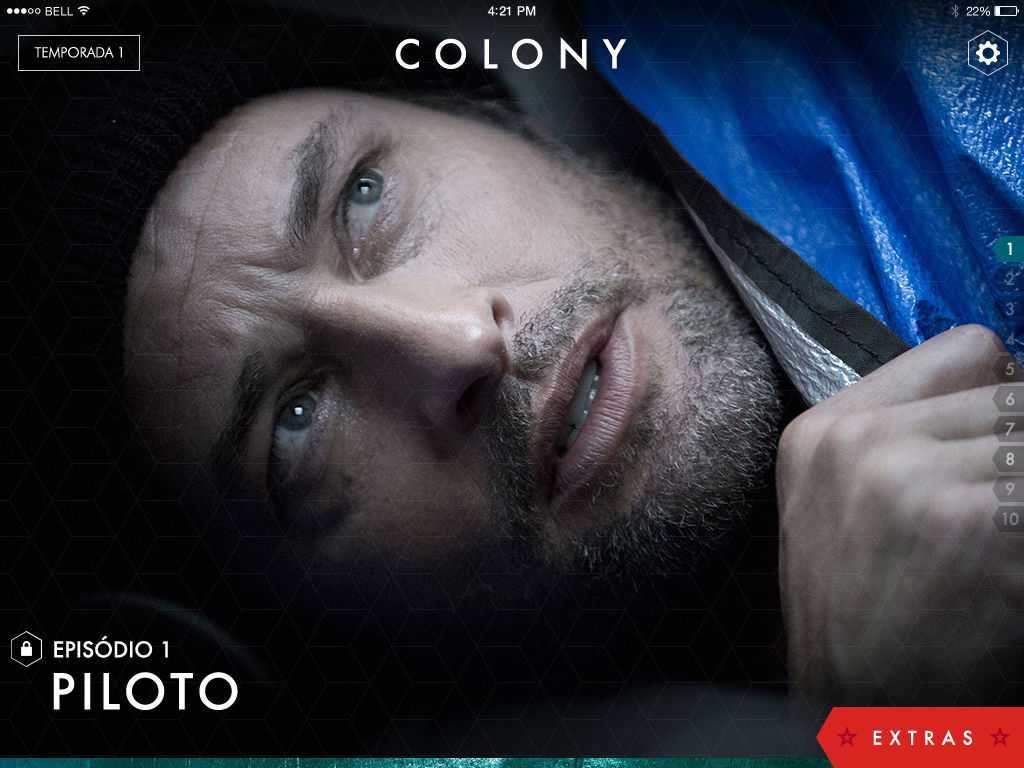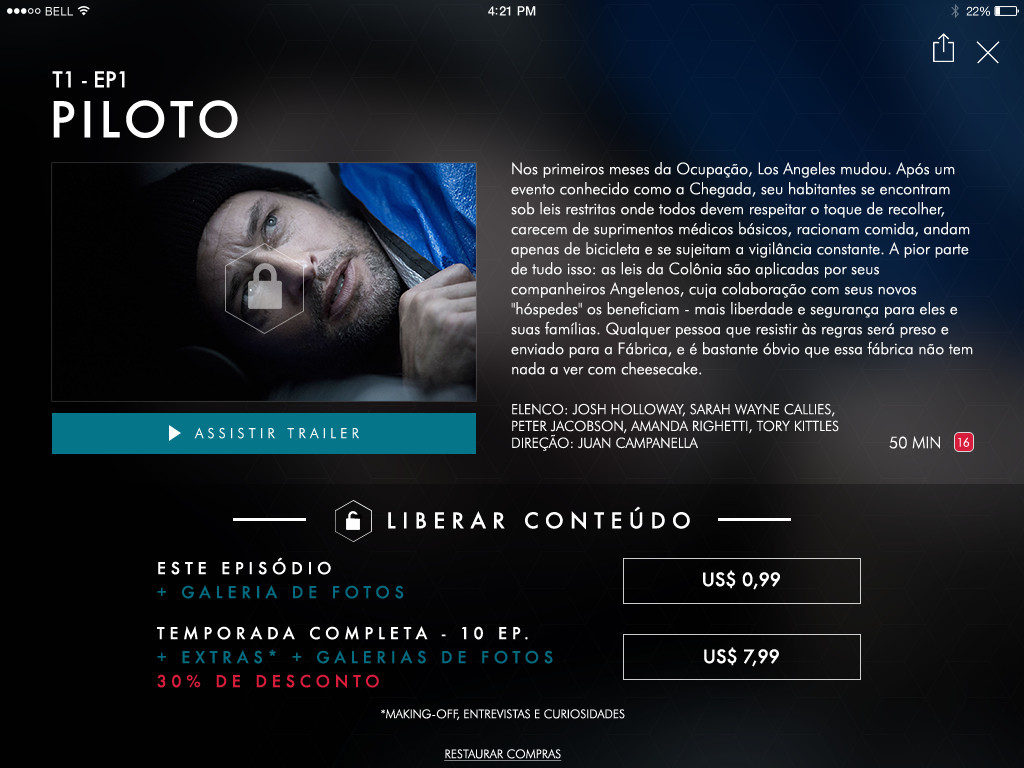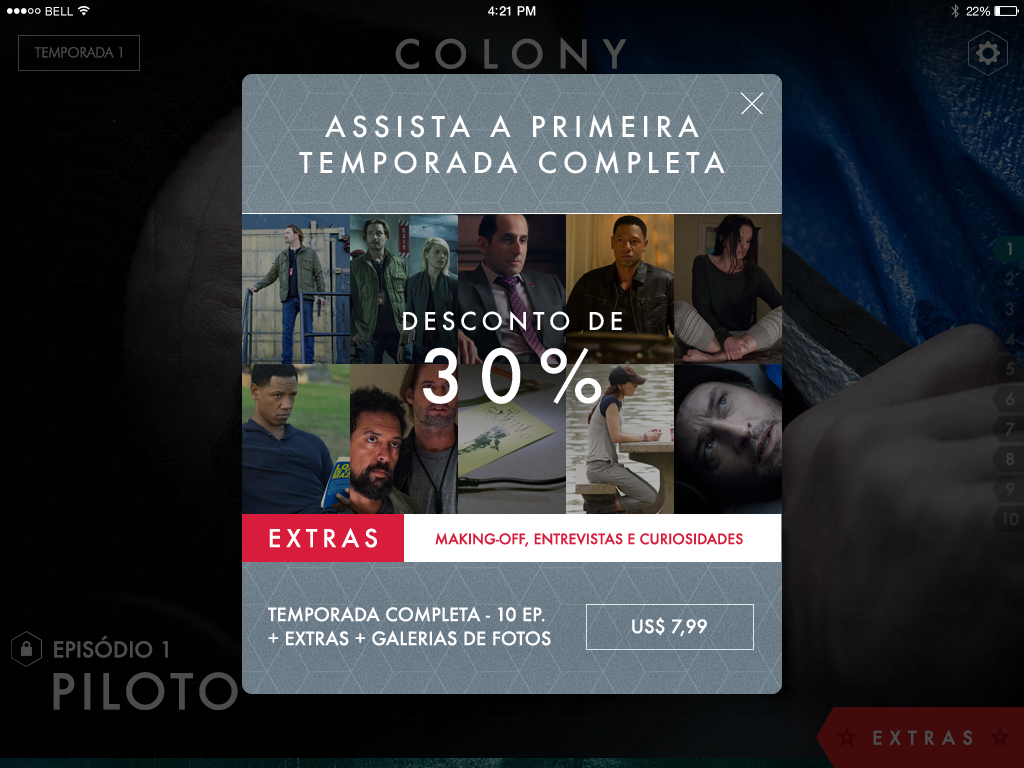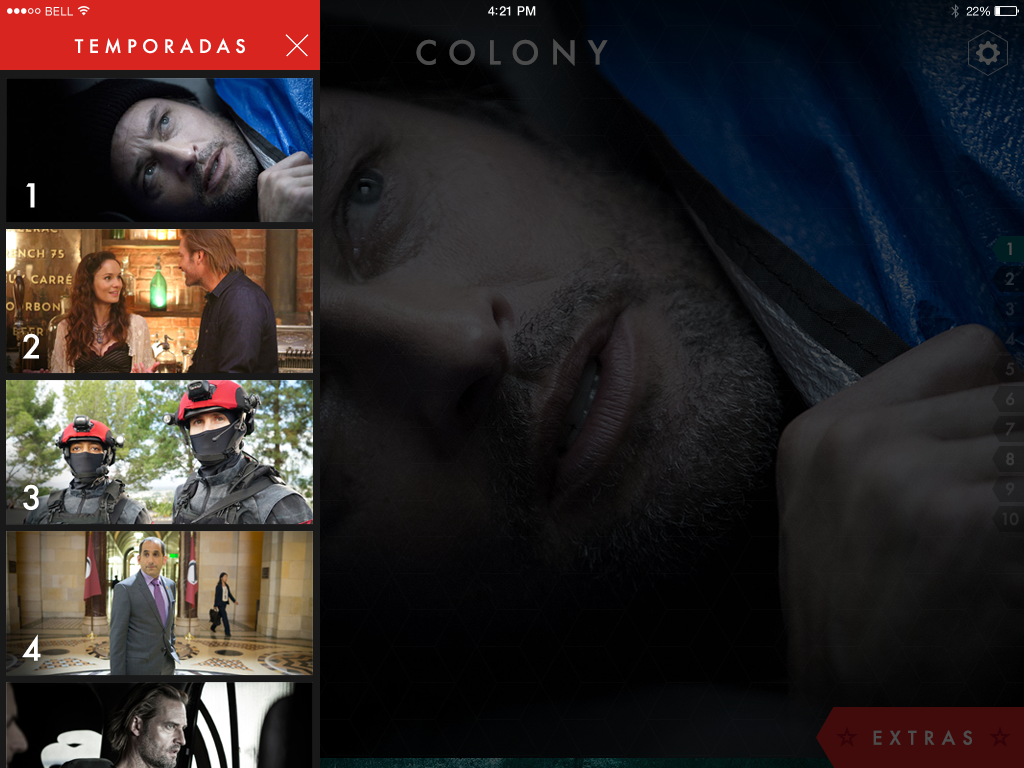Colony APP
- Art Direction
- UI Design
TV series app: a case of what not to do
Release year: 2016 • 1 min read
During the peak of our work producing apps with audiovisual content for children's intellectual properties, an opportunity arose to apply the same recipe to a different type of content: a TV series for young adults.
Over the years, we developed a framework for iOS and Android, where we designed visual concepts based on templates and established flows. In five years, we managed to publish just over 70 children's apps in total, thanks to the workflow developed between design and engineering teams.
Eventually, we realized this approach had its limits and understood the need to diversify our products. However, diversification requires a change in approach, which didn't quite happen.
Why change the approach? There are several reasons, but I'll mention just one: children's apps serve as an excellent "electronic babysitter" and are essential in the emergency situations parents often face, besides selling the idea of a safe environment.
A series like Colony, on the other hand, targets grown-ups who are familiar with established streaming platforms, offering a vast catalog for them to choose from at their leisure. Nevertheless, we decided to create a dedicated app for the series, challenging the consumption logic of major streaming platforms.
We might have had a chance if there had been investment in research to create unique selling points that resonated with the audience and maybe transform it into another thing. Or, at least, to find no evidence that the proposal is good.
Thus, we put the series on the same production line as children's apps, which didn't sit right with me. It felt like trying to squeeze an old, hairy foot into a small, fluffy, rainbow-colored sneaker.
We launched with all the care and attention we could give.
But naturally, it was a sales failure.
This project was a learning experience that fully convinced me to officialy adopt an approach that brings a consistently critical and rational perspective, along with tools that help us develop concepts with stakeholders: design thinking.





